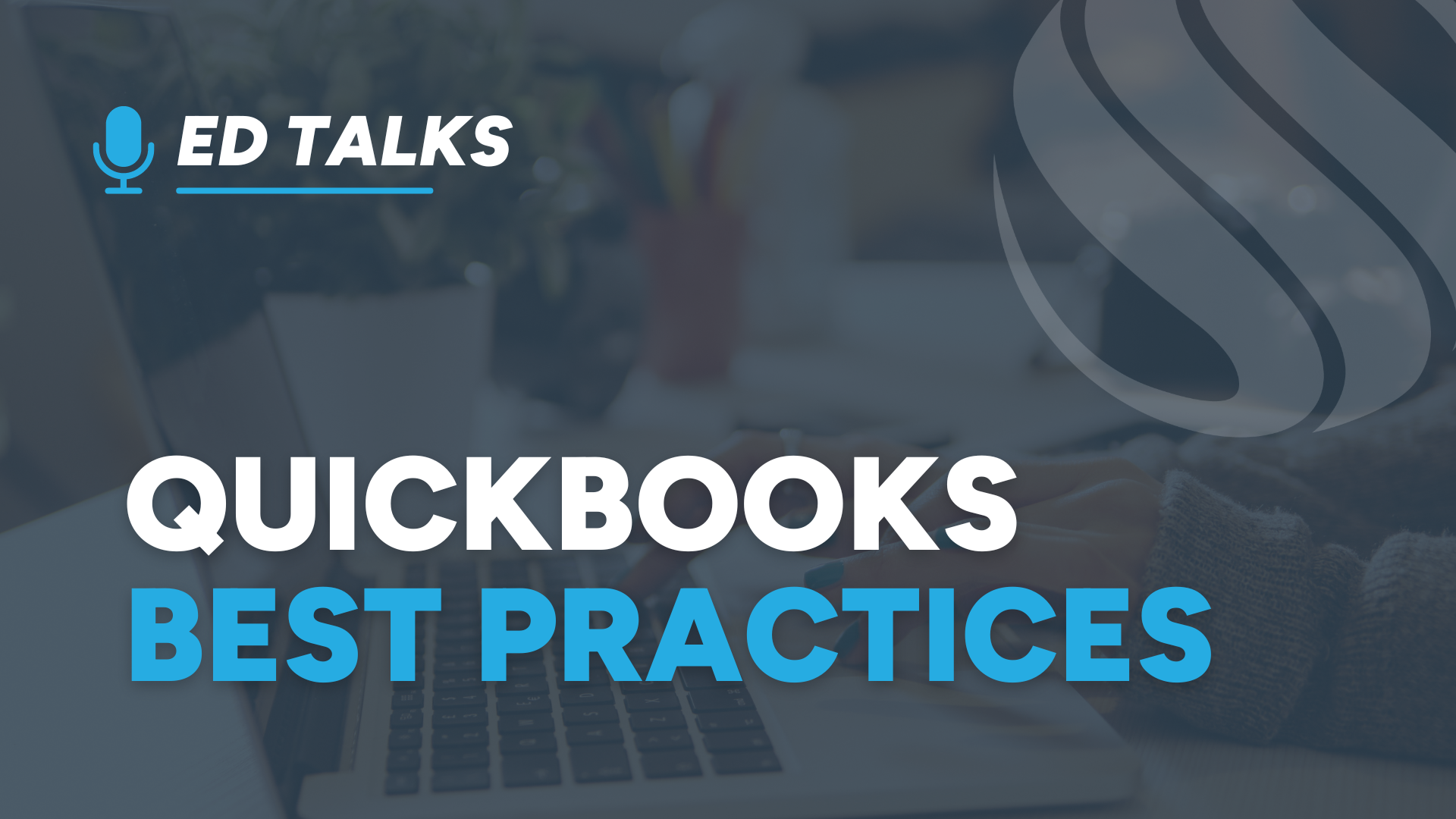
26 Aug Ed Talks: QuickBooks Best Practices
You often hear QuickBooks trainers and consultants talk about QuickBooks “best practices”. There is no written set of rules or QuickBooks law that requires specific practices, but in the over 23 years that I have been teaching and consulting hundreds of QuickBooks users, I have generally agreed with some of these common tips that will make your use of QuickBooks more effective. These tips generally apply to both QuickBooks desktop (QBDT) and online (QBO) products (in no particular order).
- Connect Your Bank Accounts: Connect your bank and credit card accounts to your banks to take advantage of online banking. Bank “feeds” or “downloads” will go a long way to keeping your data current and save you a lot of data entry. The use of carefully constructed bank rules takes advantage of machine learning, ensures consistency, and saves time. But I suggest turning off “Auto-rules” so you still have a chance to review how the rules are being applied and catch a poorly formed rule before transactions are entered. By keeping your financial transactions current, your reports can become a little more proactive and less reactive.
- Automate Transactions: Use recurring transactions for regular expenses and income. This reduces manual entry and ensures consistency. This is a little different than bank feeds discussed above. A recurring transaction (“memorized transaction” in QBDT) creates an entry in your register before it clears the bank. These will show up as “matches” when the transaction clears and shows up in your bank downloads. Use an automated transaction when the amount is consistent (like for rent) and use a bank rule when the amount varies each month (like your phone bill).
- Regular Reconciliations: Regularly reconcile your bank and credit card accounts to ensure your books match your bank statements. This helps catch any discrepancies early and ensures that your reports will produce more active and actionable results. Doing all your bank recs for the year a week before you turn your books over to your tax CPA (yes, I’ve seen this) does no good to manage your business throughout the year. Clear any “for review” data in your bank feeds before you do your bank recs. If done properly, bank recs are done in a couple of clicks because the bank feeds have pre-flagged the transactions as cleared.
- Customize Your Chart of Accounts: Tailor your chart of accounts to reflect your business’s specific income and expense categories. This makes your financial reports more meaningful to you. The secret to effective financial reports is a clear chart of accounts that is consistently followed and reports economic results in a way that the owner quicky and easily understands. I believe fewer accounts are better than an exhaustive detailed list – more granular drill-down detail can always be produced another way.
- Use Keyboard Shortcuts: Familiarize yourself with QuickBooks keyboard shortcuts to speed up data entry and navigation. My favorites are the date shortcuts, like “T” for today, “M” for beginning of the month, “H” for the end of the month, etc. for year and week. Click on Ctrl + Alt + ? in QBO to see a list of some others.
- Track 1099 Vendors: Keep track of vendors who need 1099 forms. This simplifies tax time and ensures compliance. Request the W-9 forms from new vendors when you first start working them as a condition of your payment to them. This avoids a mad scramble at the end of the year to obtain your vendor tax IDs when you are under deadline to file the 1099 forms with the IRS.
- Attach Documents: Attach receipts and invoices to transactions. This keeps your records organized and makes audits easier. It will also help answer any questions you may have later about the nature of the transaction.
- Regular Reporting: Run and review financial reports regularly to stay on top of your business’s financial health. Customize reports to focus on key metrics. Share your customized reports with team members. Organize your customized reports into groups that can be scheduled for automatic distribution.
- Clean Up Lists: Periodically clean up your customer, vendor, and product lists to remove duplicates and inactive entries.
- Secure Your Data: Always log out of QuickBooks Online when you leave your work area and use strong, unique passwords. Turn on two-factor authentication (2FA) to request a code sent to your phone or email whenever you connect from a new device. The codes may be a pain, but you have the comfort of knowing your data is secure.
- Fill Out Payee Names: Fill out payee names on checks, expenses, and bills for better reporting and tracking of expenses. I use generic payee names for common expenses, like “Gas stations” or “Restaurants”. But knowing how much annual volume you do with a major supplier may help you secure better rates or discounts. Use of vendor names also helps with the consistent of account classifications or to research questions on financial activity.
- Get Help When Needed: Utilize QuickBooks Online’s help resources, community forums, and consider working with a QuickBooks ProAdvisor (like Siegel Solutions) for complex issues.
Implementing these practices can help you make the most of QuickBooks and keep your accounting processes smooth and efficient. Let us know if you have any other tips or questions about using QuickBooks Online.

























